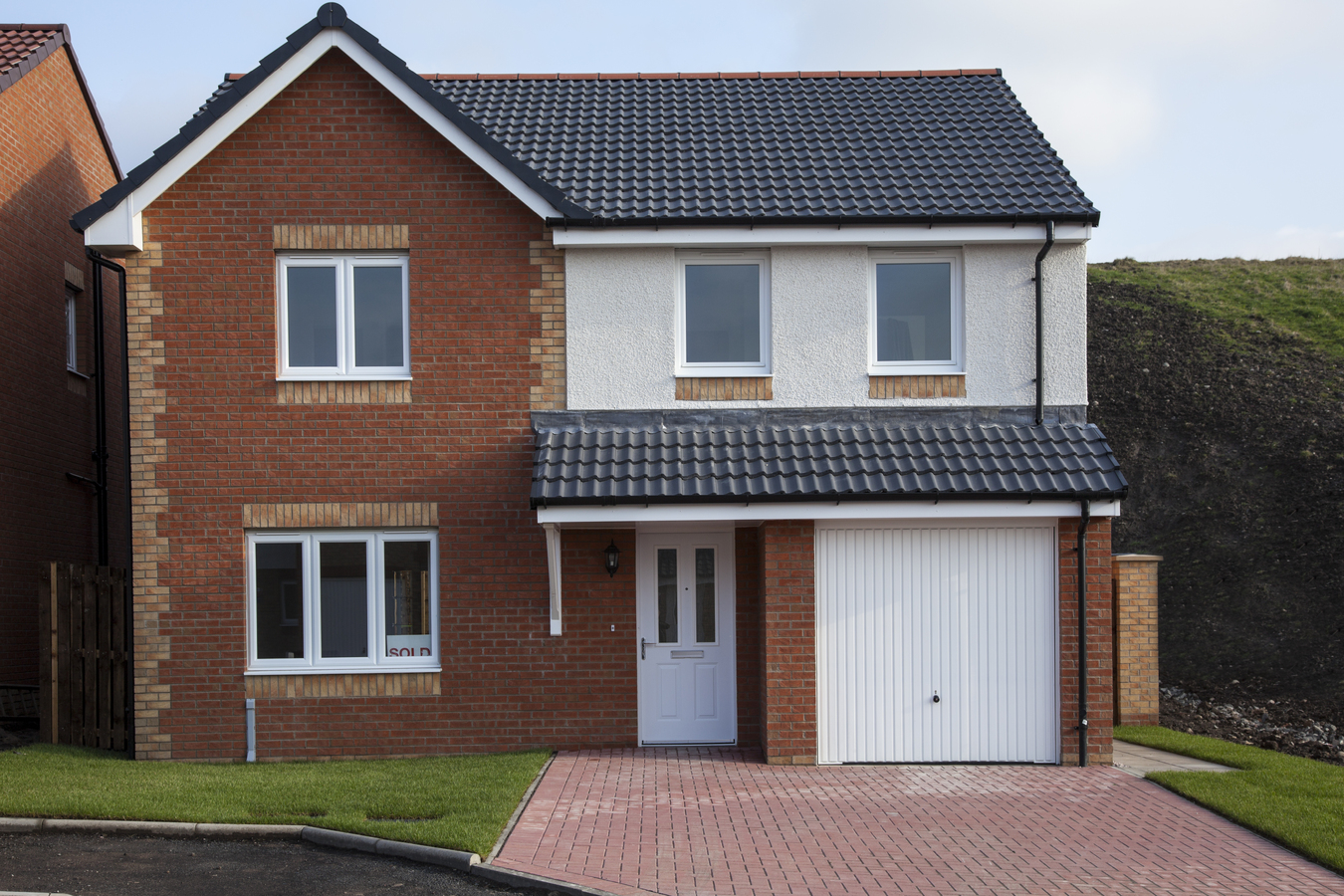Get updates from The Developer straight to your inbox Yes, please!
Paul Monaghan on the Office for Place: Beauty is not shorthand for ‘traditional’
The architect and co-founder of Allford Hall Monaghan Morris talks about his role on the advisory board for The Office for Place, a government body helping to shape design codes and neighbourhood plans in England

“At the heart of it is placemaking. Everyone agrees that’s where it seems to be going wrong,” says Paul Monaghan. “These anonymous housing schemes that get built on the edge of towns everywhere… How do we do that better?”
I’m talking to Monaghan for The Developer Podcast – not in his role as founding director of influential architecture firm Allford Hall Monaghan Morris – but in his role on the Advisory Board for the Office for Place, the government body created within the Department for Levelling Up, Housing and Communities (DLUHC) to support major reforms to planning.
The Office for Place was announced in July 2021, and emerged out of the Building Better Building Beautiful Commission. The advisory board is chaired by Nicholas Boys Smith, founding director of Create Streets. Their evolving role is to support the implementation of the National Planning Policy Framework (NPPF) through initiatives such as research and running pilot projects to create Neighbourhood Plans and implement the National Model Design Code.
Monaghan describes the original ambition of planning reform as speeding up the process while ensuring good design. “The premise is that planning takes too long in certain circumstances and is therefore very risky for developers; that risk is priced, making [homes] more unaffordable.” In addition, “the quality of design of an awful lot of housing schemes is not adequate. In particular, the placemaking and landscape treatment is often very poor.”
Listen to the full interview with Paul Monaghan
It’s unsurprising that stretched councils need support to implement changes. During austerity, many councils cut planning departments to a minimum. Central government grants to local government were cut by 37% in real terms from £41bn to £26bn in the decade from 2009/2010 to 2019/2020. DLHUC recently announced a £1m funding commitment to Public Practice to recruit placemakers back into English planning authorities – but a significant skills gap will remain.
Members of the Advisory Board include Vidhya Alakeson – the founder of Power to Change (now Director of External Relations for Kier Starmer), architect Robert Adam, known for his work in Poundbury, Victoria Hills, Chief Executive of the RTPI, planning adviser Adrian Penfold, Anna Rose, Stephen Stone, Rt Hon Ben Gummer, Andrew Cameron, Esther Kurland, Ben Page, Sir John Hayes MP, and Monaghan.
“I’m never particularly comfortable with ‘beauty’, but I think it’s interesting that a government should use it”
“One of the things that you realise in these committees and advisory groups, particularly with government, is that there are varying views,” Monaghan says. “In my firm, I’m used to getting my own way, and in this group, you don’t. There are things that you agree with and things that you don’t agree with.”
What doesn’t sit entirely comfortably with Monaghan is the increasing use of the term ‘beauty’ – which in addition to the white paper, Living with Beauty, has made its way into planning policy including the NPPF, and recently onto government websites describing the role of the Office for Place: their purpose is “to make it easier for all neighbourhood communities, wherever they might be, to require what they find beautiful and refuse what they find ugly.”
In a letter to all English council leaders sent in December 2022, Secretary of State Michael Gove writes that the government has “established beauty as an overarching objective alongside sustainable development”.
“I’m never particularly comfortable with ‘beauty’, but equally I think it’s interesting that a government should use it. Is it a question of semantics?” asks Monaghan. “Clearly if we go back to Vitruvius’ firmness, commodity and delight… it’s just a different way of saying it.
“For beauty, I always read good design,” Monaghan says.
Yet beauty was only one of Vitruvius’ three principles of good architecture – venustas (delight or beauty), alongside utilitas (commodity: useful and appropriate spatial accommodation) and firmitas (firmness or structural stability). And beauty, of the trio, always came last – implying its dependence on the adequate execution of the other two.
Gove’s emphasis on beauty in policy is said to be born out of the belief that “communities will support new housing if they are confident that it will be beautiful”, Boys Smith relates in this article for Conservative Home.
Monaghan dismisses fears that an emphasis on ‘beauty’ hails the return of the “style wars” of the 1980s, with ‘beauty’ as a cypher for traditional or neo-classical architecture. “My experience of being with this group for several years is that there isn’t any link between beauty and traditional architecture. I don’t think there is a hidden message behind it. The definition of ‘beauty’ is quite open.”
This openness to interpretation has seen a call for greater clarity by the Royal Institute of British Architects (RIBA). The institute questions the term in its 20-page response to the NPPF: “What constitutes such attributes remains a matter of subjectivity. While the NPPF stipulates that principles in local design guides or codes will be one measure of character or beauty, we are not fully satisfied that these will provide the level of definition necessary to ensure that character is not used as a reason to refuse necessary and otherwise high-quality development.”
The Quality of Life Foundation is also urging “significant caution” regarding including beauty in policy, calling for clarity of definition that emphasises the importance of design over style, and underlining the need for a planning process founded in “negotiation and compromise” based on the unique needs of individual places.
“There isn’t any link between beauty and traditional architecture. The definition of ‘beauty’ is quite open.”
The RIBA also questions whether beauty is more important than sustainability: “Members also expressed that character is the wrong angle to be focusing on given the severity of the climate emergency.”
Although sustainability is mentioned in Gove’s letter to councils, the word is used half as many times as beauty and beautiful. Affordable housing isn’t mentioned at all – indeed the letter asserts that quantity is less important than quality, writing that “developments that are not well-designed should be refused planning permission and housing targets should not be used as a justification to grant them permission.”
This represents a major shift in policy at a time when the number of people living in temporary accommodation has risen by 74% over the past 10 years, according to figures published by Shelter in January. Can we really afford to reject the construction of net zero affordable homes on the grounds that they are ugly?
Another problem is that government’s empowerment of councils to "refuse ugly" does not extend to the homes created under permitted development rights (PDR). An estimated 100,000 PDR dwellings have been created since 2013. Many lack adequate space, security and fire safety, proper ventilation, natural light, access to green space and amenities – something the TCPA’s campaign for the Healthy Homes Bill seeks to address.
Semantics aside, Monaghan is pleased that this government is passionate about design quality and is standing up to mass housebuilders that have been creating suburban neighbourhoods with a lack of adequate public space and amenities. A study undertaken by Place Alliance has shown that since changes to the NPPF were introduced in 2020, housing developments are more likely to be rejected for poor design, and the Planning Inspectorate is less likely to overturn decisions made on the basis of design quality.
Which begs the question, with a rise in rejections, will these changes really speed up planning? “I said it was hoping to speed up planning,” clarifies Monaghan. “I didn’t say that it was going to speed up planning.”
Listen to the full interview, like and subscribe to The Developer Podcast wherever you get your podcasts. Sign up to The Developer Weekly email to find out when new episodes go live. You can support our podcast on Patreon at www.patreon.com/thedeveloperuk
Full interview with Paul Monaghan, co-founder of Allford Hall Monaghan Morris and member of the advisory board of The Office for Place
If you love what we do, support us
Ask your organisation to become a member, buy tickets to our events or support us on Patreon
Sign up to our newsletter
Get updates from The Developer straight to your inbox
Thanks to our organisation members
Become a member
© Festival of Place - Tweak Ltd., 124 City Road, London, EC1V 2NX. Tel: 020 3326 7238

